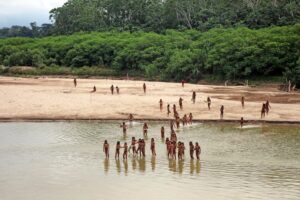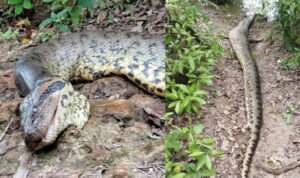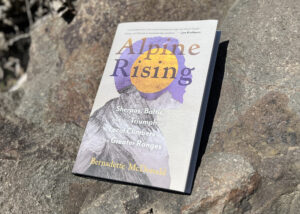The “Man of the Hole” has dug his last pit in the Amazon rainforest. The indigenous man lived alone and isolated as the last of his tribe for 26 years before officials found him dead in a hammock on August 23.
He was the last of an indigenous group living in the Tanaru indigenous area in the state of Rondônia, which borders Bolivia, the BBC reported. Brazil’s Indigenous Affairs Agency (Funai) first became aware of his presence in 1996 and soon began monitoring the area where he lived for his safety.
The outlet reported that a Funai agent found his body in a hammock covered in macaw feathers. The remains displayed no signs of violence. Indigenous expert Marcelo dos Santos told local media that the man likely placed the feathers on himself in preparation for his death.
Santos said he estimated the man probably died 40-50 days before authorities found his body. He’s believed to have been around 60 years old.

Funai personnel encountered and photographed the man in 2018. Photo: Funai via the BBC
Why the ‘Man of the Hole?’
Officials told the BBC that the man’s territory showed no signs of incursions at the time of his death. Nothing in his hut appeared to be disturbed. The outlet said that an eventual autopsy would try to determine whether he had contracted a disease.
The Man of the Hole’s name came from his demonstrated propensity for digging deep holes in the earth wherever he went. Some of the 10-metre pits appeared to be hunting traps, but he also dug one in the 50 or so straw huts he built.

One of the dozens of huts the man built. Photo: J Pessoa/Survival International
The Funai agent who found his body thinks the holes held spiritual significance for the man. Others suggested he used them as hiding places.

The man probably dug holes in the jungle to hunt wild boar and other animals. Photo: J Pessoa/Survival International
Other evidence indicated he not only hunted but also gathered and raised crops. The BBC reported that he planted maize and manioc in his territory and collected honey and fruit such as papaya and bananas.
The Man of the Hole had long roamed his territory under government protection. The Brazilian constitution gives indigenous people a right to their traditional lands. Brazil’s government first restricted access to the land he inhabited, designated the Tanaru Indigenous Territory, in 1998.
Protecting the Tanaru lands
But the regulations on paper did not mean the Man of the Hole didn’t still face incursion from outsiders. He lived alone largely because ranchers killed off many of his fellow tribespeople in efforts to expand their lands as early as the 1970s. The government’s efforts to protect his land — which measures about 8,070 hectares — may have only proven marginally successful. Tension in the Amazon commonly boils over into violence.
In 2009, a Funai post in the area sustained damage in what officials considered “a threat to the Man of the Hole and the Funai agents protecting him,” the BBC reported. They later found cartridge shells left behind at the site.
With the Man of the Hole dead, the fate of the land hangs in the balance. Regulations demand that restricting land requires proof of indigenous presence there, with renewal every few years. Indigenous rights groups have called on authorities to grant the Tanaru reserve permanent protection in the wake of the man’s death.






